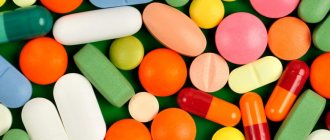Vitamin D can be produced in the body with moderate sun exposure or when taken from food or supplements.
Adequate intake of vitamin D is important for regulating the body's intake of calcium and phosphorus, maintaining a healthy skeletal system and teeth, and protecting the body from numerous illnesses and diseases such as cancer, type 1 diabetes, and many types of sclerosis.
Like 5
3742
Vitamin D has many functions in the body, helping to:
- keep teeth and bones healthy;
- support the health of the immune, nervous systems and brain;
- regulate insulin levels and cardiovascular health;
- maintain the health of the cardiovascular system and lungs;
- influence the expression of genes involved in cancer development.
Despite its name, vitamin D is considered a prohormone and not a vitamin. This is because the body is able to produce vitamin D on its own through exposure to sunlight on the skin, while vitamins are nutrients that cannot be synthesized by the body and must be supplied to the body through diet or supplements.
- 1128 1056
More details - 222
More details
- 570
More details
- 162
More details
It is believed that exposure to the sun for 5-10 minutes per week on exposed skin allows the body to produce the vitamin D it needs. However, vitamin D has a half-life of only about 2 weeks. This means that supplies may be slow to replenish, especially in winter. Recent studies have shown that over 50% of adults and children worldwide are vitamin D deficient.
Vitamin D is formed when sunlight converts cholesterol in the skin into calciol (vitamin D3). Vitamin D3 is often converted to calcediol (25 - hydroxyvitamin D3) in the liver. The kidneys then help convert calcediol into the active form of vitamin D called calcitriol (1,25-hydroxyvitamin D3). As such, statins and other drugs or supplements that inhibit cholesterol synthesis, liver or kidney function may interfere with vitamin D synthesis.
Getting Vitamin D Naturally
Vitamin D (D) includes a group of biological substances. The main connections include the following:
- ergocalciferol (D2);
- cholecalciferol (D3).
All elements are obtained through food. And D3 is also produced under the influence of sunlight. Therefore, in addition to proper nutrition, walk more during the day, in good weather.
Good to know! Good news for girls. Cholecalciferol is also synthesized with the help of ultraviolet rays. So, your favorite solarium is a group D source. You just can’t stay there for a long time. Abuse of this procedure promises cancer.
Sufficient content of beneficial vitamin D gives positive results:
- Calcium and magnesium begin to be better absorbed by the body. This means the skeletal system improves.
- Blood sugar levels are normalized.
- Growth and development of healthy cells, which helps prevent a number of diseases. Calciferol is prescribed for preventive purposes starting from infancy.
- The nervous system and muscle function are normalized.
- Immunity increases.
Now Foods, Vitamin D-3, High Potency, 5000 Dosage, 120 Softgels
from 525 ₽
More details
The main purpose of D is to saturate the body with calcium and phosphorus.
Basic foods containing vitamin D in large quantities will help significantly improve your health. Also, do not forget about nature - the sun's rays (d3).
Watch the video and learn a lot of useful information:
What is vitamin D and why does the body need it?
Vitamin D (calciferol) is a biologically active substance that is synthesized due to the action of ultraviolet rays. For this feature, it is often called the “sunshine” vitamin. In order to get the daily dose of the substance, it is enough to go outside on a clear day and stand in the sun for 20-25 minutes. An alternative option for replenishing calciferol reserves is to consume foods containing large amounts of vitamin D.
Beneficial features:
- normalizes heart function;
- prevents many chronic diseases;
- reduces the risk of developing cancer;
- strengthens the immune system;
- participates in the production of certain hormones;
- promotes cell growth in the body;
- strengthens teeth, bones and hair.
Replenishment of the body with vitamins comes from sunlight and proper nutrition.
Vitamins of group D. Description and functions
Experts identify 6 types of calciferol. They all have different compositions and methods of application.
Forms of substance:
- D1. This type of vitamin is not found in the human body. It is obtained artificially and is used in the treatment of certain diseases.
- D 2. Ergocalciferol is one of 2 types of vitamin D that are obtained from food. In addition, it is present in various dietary supplements.
- D3. This is the most active form, the source of which is food of animal origin and ultraviolet radiation. The substance is an important component, so you should know which foods contain vitamin D3. Lack of cholecalciferol leads to various diseases.
- D4. This form of the substance is found in the human epidermis layer. Under the influence of ultraviolet radiation it turns into D3.
- D5. This is the safest form of vitamin D, which is a synthetic analogue of cholecalciferol. It is widely used in medicine for the treatment of cancer.
- D6. It was discovered relatively recently, so scientists have not had time to study its importance for humans.
Vitamin D test
To determine the amount of calciferol in the body, you need to take a blood test. This should be done in special endocrinology centers, where there is all the necessary equipment and qualified doctors.
If you feel unwell and have a weakened immune system, it is advisable to get tested for the content of calficerol in your body
Analysis is needed for the following symptoms:
- insomnia;
- increased fatigue;
- decreased appetite;
- irritability;
- muscle weakness;
- vomit.
Blood is drawn from a vein in the morning. Before the procedure, the patient should fast for 8-12 hours and also try to drink a minimum amount of water.
The results obtained are transmitted to the endocrinologist, who analyzes them and brings the information to the patient.
How much calciferol is in fish and seafood
Marine components are considered the most nutritious in terms of nutrients. Table 2 will tell you the exact content of vitamin D in fish products.
Table 2. D2 in fish and seafood
| Name | Amount d in 100 g, mcg |
| River perch | 3 |
| Tuna | 5,7 |
| Black caviar | 8 |
| Pink salmon | 10,9 |
| Salmon | 11 |
| Mackerel | 16,1 |
| Chum fish | 16,3 |
| Fatty herring | 30 |
| Canned cod (liver) | 100 |
| Fish oil (cod) | 250 |
A high level of vitamin D is found in fatty fish, namely herring. The richest offal is cod liver. We can safely conclude that this is the most saturated category where you can get calciferol.
Interesting! Seaweed covers 48% of the daily value of nutrients D.
Vitamin D Rich Foods
The deficiency of the substance can be compensated by changing the diet, adding foods high in the element to the menu. The vitamin is difficult to find in foods of plant origin; it is practically absent in vegetables and fruits. The highest content of the element is in seafood and river fish.
Mushrooms, but not all varieties, contain the substance. It is recommended to use fresh rather than frozen product. You should purchase mushrooms in specialized stores or collect them yourself. For the winter, they can be dried and replenish the vitamin deficiency in the absence of sunlight.
Animal products
The most vitamin is found in fish. In poultry, beef and other types of meat, the substance is practically absent or present in small quantities. You can include beef liver in the menu, it contains 49 IU of vitamin.
Egg yolk is useful if the body does not have enough vitamin D. 1 egg contains 0.042 mg of vitamin D. The product is oversaturated with fat, so it should not be used in the diet often. It is recommended to use it cooked together with other products: as a salad, as a side dish, etc. You can replace chicken eggs with quail eggs.
Dairy
People often experience symptoms of poisoning from excess amounts of vitamin D in dairy products. To obtain a sufficient amount of the element daily, it is enough to drink 1 glass of milk per day. In addition to it, you can eat yoghurt, sour cream, cottage cheese, and cheeses.
It has been proven that camel milk has the highest vitamin content.
Soy milk is suitable as a substitute for cow's milk for vegetarians who do not consume plant-based products. This product contains 0.127 mg of vitamin D per 1 cup.
Up to 10 IU is found in ricotta cheese. Other varieties have lower vitamin content.
Fish and seafood
Seafood and fish contain large amounts of not only phosphorus, but also the vitamin necessary for its absorption. Therefore, this product cannot be excluded from the daily menu.
Vitamin D content in fish and seafood (per 100g of raw product portion).
- Red and black caviar. In 1 tbsp. there is 0.020 mg of substance.
- Tuna. You can use canned or freshly prepared fish. It does not lose its properties and contains more than half of the daily requirement of the vitamin.
- Salmon. There are about 400-450 IU per 100 g of product.
- Sardines contain potassium, calcium and iron. Sardines contain 0.5 mg of vitamin D per 100 g.
- Acne. You should not overuse eel, because it contains more vitamins than an adult should consume per day. Fish is suitable as an addition if eaten with a side dish.
- Herring. Contains at least 300 IU per 100 g. Can be used in any form. But steaming is preferable. This way, a minimal amount of substance is lost during cooking.
- Cod liver. It is recommended to take 1 package for a family of 3-4 people and eat it within 3-4 days, evenly distributing portions. This product is used to create supplements and correct deficiencies in the body.
If a person does not have the opportunity to consume seafood, then they can be replaced with fish oil. Manufacturers use different products to create dietary supplements, and they differ in the amount of vitamin. For example, cod liver tablets contain 250 mcg/100 g.
Cereals and legumes
Calciferols are not found in grains and legumes.
Seeds and nuts
There is no nutrient in the products.
Fruits, vegetables and greens
It is recommended to add grapefruit and lemon to the menu. Fruits are rich in vitamins C and D. To compensate for the deficiency of the element, eat greens: dill, parsley, green onions.
In the summer, prepare dandelion oil, which you can use to season salads. You can make soups from nettle or sorrel with the addition of other products that contain microelements.
Dandelion flower oil is rich in vitamin D.
Many elements of group D are contained in the peel of vegetables: tomatoes, potatoes. With proper heat treatment, they retain their properties.
By consuming only greens, fruits and vegetables, it is impossible to achieve the daily intake of the element, because the content of the substance in these products is close to zero.
Group D in eggs and derivative products
Another popular category is eggs. Many people use them every day, thereby practically satisfying the daily requirement of calciferol. We find out the vitamin D content in products in Table 3.
Table 3. “D” in eggs
| Name | D in 100 g, mcg |
| Quail | 1,4 |
| Chicken eggs | 2,2 |
| Egg powder | 5 |
| Yolk | 7,7 |
On a note! Calciferol is easily absorbed by the body, no matter in what form it is taken.
According to the list of foods that contain vitamin D, the yolk is secreted. And this is one of the most accessible and sought-after components in food.
Recommended daily intake
The United States Institute of Medicine recommendations for vitamin D intake, issued in 1997, state the following:
- From birth to 50 years – 200 IU (5 mcg)
- From 51 to 70 years – 400 IU (10 mcg)
- Over 71 years old – 600 IU (15 mcg)
- Pregnant and lactating women - 200 IU (5 mcg)
The optimal intake of vitamin D is considered much higher, but adults are recommended to take at least 1,000 to 2,000 IU (25-50 mcg). Recently, there has been growing support that intakes should be reconsidered due to the prevalence of vitamin D deficiency, as well as evidence based on its importance in preventing a variety of diseases.
The best way to find out your body's levels is to test your blood for a form known as 25-hydroxyvitamin D. In general, vitamin D levels below 30 nmol/L (12 ng/ml) are considered insufficient for healthy bones and overall health. For most people, a level of 50 nmol/L or higher is satisfactory, although levels above 125 nmol/L (50 ng/ml) are probably too high.
The upper limit of safe levels is 1,000-1,500 IU per day for infants, 2,500-3,000 IU for children 1 to 8 years of age, and 4,000 IU per day for children 9 and older, adults, and pregnant and breastfeeding women.
How much calciferol is in milk and derivative products
There are few dairy products that contain vital vitamin D (see Table 4). This nutrient is most found in high-fat foods - ghee and butter.
Table 4. Which dairy products contain the most vitamin D?
| Name | D per 100 g, mcg |
| Suluguni | 0,71 |
| Processed cheese Russian | 0,74 |
| Peshekhonsky cheese, 45% | 0,84 |
| Dutch cheese, 45% | 0,86 |
| Camembert cheese | 0,93 |
| Russian cheese | 0,96 |
| Cheeses 50% (cheddar and Swiss) | 1 |
| Goat and cream | 1,3 |
| Unsalted butter | 1,5 |
| Ghee | 1,8 |
Although Suluguni cheese is far from the best source of vitamin D, it contains many other useful elements. From the data in Table 4, it can also be understood that milk contains virtually no vitamin D.
Vitamin D in mushrooms
There are a couple of species of mushrooms that contain vitamin D (see Table 5).
Table 5. Products with vitamin D: list of mushrooms
| Name | D per 100 g, µg |
| Champignon | 0,1 |
| White | 0,2 |
| Shiitake | 0,4 |
| Oyster mushroom | 0,7 |
| Morel | 5,1 |
| Chanterelles | 5,3 |
Vitamin D is not easy to obtain in foods such as mushrooms. Good if you are a fan of chanterelles or morels. Otherwise, pay attention to other categories where the desired nutrient is present.
How it works in the body
You can understand the benefits of vitamin D by studying its action. Below is a description of the main functions of vitamin D:
- the main thing vitamin D is responsible for is the absorption of calcium and phosphorus in the duodenum and reabsorption in the kidneys; promotes the growth and strengthening of bone tissue and tooth enamel in children;
- participates in activating the immune system by stimulating protein synthesis; deficiency of vitamins D leads to frequent colds and chronic infectious and inflammatory processes in the lungs, kidneys, etc.; Immunity disorders lead to the development of autoimmune (with allergies to one’s own tissues) inflammatory processes (rheumatoid arthritis, etc.);
- suppresses the mechanism of development of demyelinating diseases of the nervous system, including multiple sclerosis, most often of autoimmune origin; myelin is a sheath that covers the nerves and prevents disturbances in the transmission of nerve impulses;
- prevents the development of cancer by suppressing the growth of tumor cells; this effect of vitamin D was noted in a WHO report in 2008; prevents the development of diabetes and obesity - has a metabolic effect;
- regulates blood clotting;
- normalizes blood pressure (BP), inhibits the development of atherosclerosis, which is the prevention of coronary heart disease and atherosclerosis of the peripheral arteries of the extremities with the possible development of gangrene;
- stimulates collagen synthesis, strengthens bones and teeth, preserves the youth of the skin epidermis; the role of vitamin D in this process is irreplaceable;
- promotes the formation of insulin, lowering blood sugar; regulates carbohydrate metabolism;
- normalizes fat metabolism, reduces body weight.
- stimulates the mechanism of synthesis of male sex hormones, eliminates the phenomena of impotence;
- participates in the maturation of the egg in women;
- helps improve vision;
- suppresses the aging process - the role of vitamin D in this process has not yet been fully studied.
Vitamin D is especially necessary for infants and the elderly. Since infants (especially newborns) rarely sunbathe and receive very little calciferol from food during breastfeeding, they are prescribed additional intake in the form of medications. Baby food is also almost always fortified with calciferol.
There is no doubt that vitamin D is beneficial for older people, whose ability to absorb this biologically active compound is often impaired, so additional intake is required.
Important: it is necessary to accurately calculate the dose of the drug, since only a deficiency, but also an overdose, is dangerous. This must be done by a doctor, otherwise irreparable harm may be caused to the body.
Category: oils
There are no vegetable oils with D2. Everything went into animal fats (see Table 6).
Table 6. Oil products rich in vitamin D
| Name | D in 100 g, mcg |
| Mayonnaise | 0,2 |
| Goat and cream | 1,3 |
| Unsalted butter | 1,5 |
| Ghee | 1,8 |
Mayonnaise, which contains the least amount of vitamin D in this category, is recommended to be consumed in its natural form.
Where can vegetarians get calciferol?
Vegetarians receive natural sources of plant origin with the highest level of vitamin D. And there are few of these in nature:
- chanterelles (5.3 mcg), morels (5.1 mcg);
- walnuts.
Plants:
- nettle;
- alfalfa;
- dandelion;
- oats;
- parsley;
The proportion of D2 in mcg in plants and nuts is difficult to calculate. The fact is that vitamin D in such food is contained in minimal quantities. There is no such nutrient in the presses, including the most popular - flaxseed and olive. Some supporters of plant-based nutrition allow fish into their diet - it is much easier for them to saturate the body with D2 nutrients.
Vegetarians should pay attention to dietary supplements: in addition to animal origin, calciferol is also found in vegetarian capsules.
★★★★★
Solgar, Vitamin D3 (Cholecalciferol), 55 mcg (2,200 IU), 100 Veggie Caps
876 ₽
More details
— 28%
★★★★★
Garden of Life, Vitamin Code, Raw D3, 5,000 IU, 60 Vegetarian Capsules
1 547 ₽ 1 098 ₽
More details
★★★★★
Thorne Research, D-10,000, 60 capsules
1 500 ₽
More details
Lots and lots of sun will also help (d3). Take daily walks for at least 1 hour, preferably longer. And mushrooms, which contain the most vitamin D from a vegetarian diet.
Vitamin balance
The importance of vitamin D for humans can hardly be overestimated, so you should constantly replenish its supply in the body. Daily value for different age groups (measurements in units of mcg or IU: 1 mcg = 40 IU):
| Age category | Daily requirement for calciferol |
| Infants up to one year old | 7.5 – 10.0 mcg (400 – 500 IU) |
| from one year to 5 years | 10 mcg (400 IU) |
| from 5 to 13 years | 2.5 mcg (400 IU) |
| Adults 15 – 60 years old | 2.5 – 5.0 mcg (500 IU) |
| Adults over 60 years old | 10 – 15 mcg (600 IU) |
| Pregnant and nursing mothers | 10 mcg (500 IU) |
UNIT CONVERTER: VITAMIN D
Form of substance
Decimal places as a result
Convert
Conversion of IU ⇄ g/mg/mcg (developed by pharmacists and doctors based on reliable data)
Increased daily amounts of vitamin D will be required mainly for people:
- those living in the North, where there is little sun;
- living in environmentally unfavorable areas;
- working at night;
- bedridden patients who rarely spend time in the sun;
- patients with diseases of the stomach and intestines - with these diseases (vitamin D is poorly absorbed;
- elderly people prone to colds;
- during pregnancy and lactation.
The maximum daily dose is 15 mcg (600 IU). Some experts believe that the human body requires much larger doses of vitamin D, increasing the maximum daily dose to 4000 IU or more. But so far the World Health Organization (WHO) has not made such recommendations: calciferols are under study.
★★★★★
California Gold Nutrition, Vitamin D3, 125 mcg (5000 IU),…
316 ₽
More details
★★★★★
California Gold Nutrition, Vitamin D3 Gummies, Gelatin Free,…
474 ₽
More details
★★★★★
California Gold Nutrition, Vitamin D3, 50 mcg (2000 IU), 90 Fish Gelatin...
316 ₽
More details











